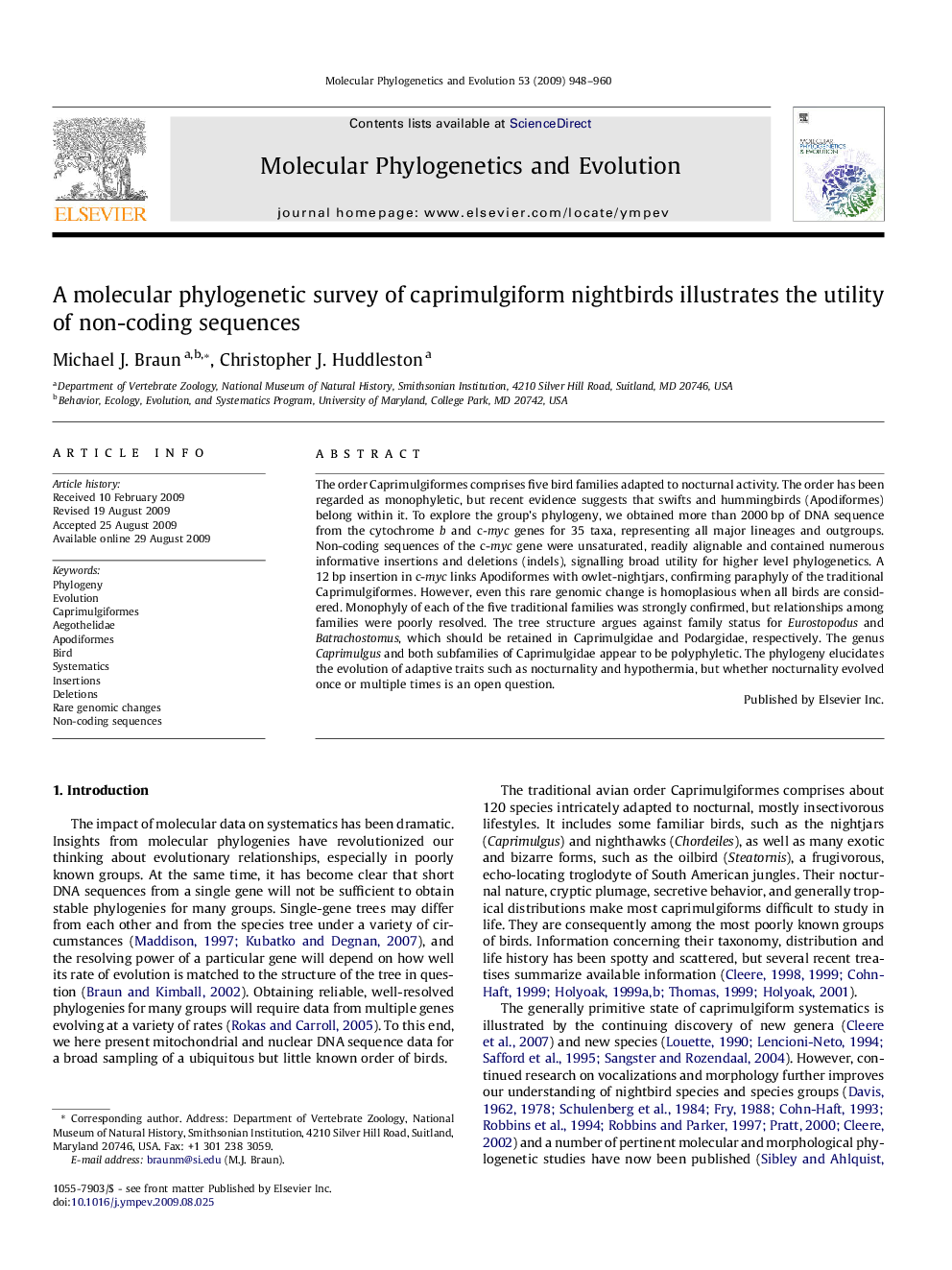| Article ID | Journal | Published Year | Pages | File Type |
|---|---|---|---|---|
| 2834565 | Molecular Phylogenetics and Evolution | 2009 | 13 Pages |
The order Caprimulgiformes comprises five bird families adapted to nocturnal activity. The order has been regarded as monophyletic, but recent evidence suggests that swifts and hummingbirds (Apodiformes) belong within it. To explore the group’s phylogeny, we obtained more than 2000 bp of DNA sequence from the cytochrome b and c-myc genes for 35 taxa, representing all major lineages and outgroups. Non-coding sequences of the c-myc gene were unsaturated, readily alignable and contained numerous informative insertions and deletions (indels), signalling broad utility for higher level phylogenetics. A 12 bp insertion in c-myc links Apodiformes with owlet-nightjars, confirming paraphyly of the traditional Caprimulgiformes. However, even this rare genomic change is homoplasious when all birds are considered. Monophyly of each of the five traditional families was strongly confirmed, but relationships among families were poorly resolved. The tree structure argues against family status for Eurostopodus and Batrachostomus, which should be retained in Caprimulgidae and Podargidae, respectively. The genus Caprimulgus and both subfamilies of Caprimulgidae appear to be polyphyletic. The phylogeny elucidates the evolution of adaptive traits such as nocturnality and hypothermia, but whether nocturnality evolved once or multiple times is an open question.
